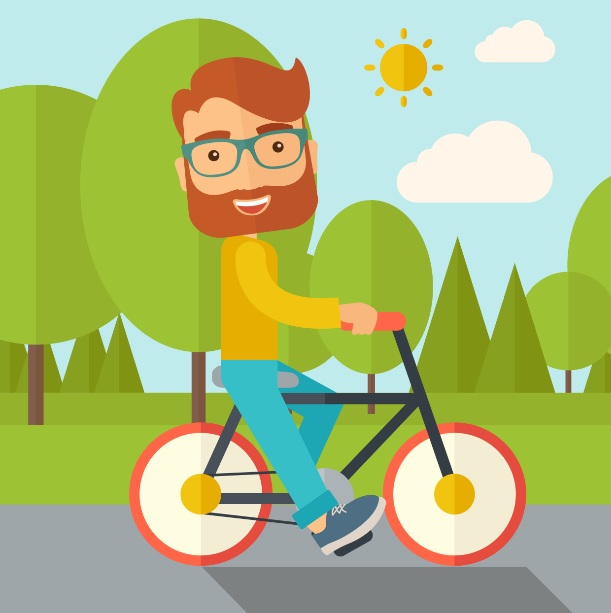PART A_1
First, I will ask you some questions about yourself. Please answer.
最初にあなたについて質問しますので、答えましょう。
PART A_2
| 1. | What is your name? |
| Answer: | |
| 2. | This lesson is for Eiken Grade 4. Are you ready? |
| Answer: | |
| 3. | How are you? |
| Answer: |
PART B_1
You will read aloud the passage below. Please make sure to start from the title.
文章を読みましょう。タイトルから読み始めてください。
(Please send the mispronounced words and expressions to your student.)
PART B_2
Momoko’s dog
Momoko has a dog. She walks her dog every morning. Her dog likes walking on rainy days, too.
PART B_3
Now, let’s review some words from Part B_2.
ではいくつかの単語と文章を復習してみましょう。
(Please review the mispronounced words and expressions from Part B_2.)
PART B_4
PART C_1
We’ll read aloud the words below. Please repeat after me. I will check your pronunciation.
単語を音読します。講師に続いて読みましょう。講師は発音を確認します。
(Please send the mispronounced words and expressions to your student.)
PART C_2
| dog |
犬
|
| walk |
さんぽする
|
| every morning |
毎朝
|
| rainy |
雨の
|
| too |
(…も)また
|
PART C_3
Now, let’s review some words and expressions from Part C_2.
ではいくつかの単語を復習してみましょう。
(Please review the mispronounced words and expressions from Part C_2.)
PART C_4
PART D_1
We’ll read aloud the sentences below. Please repeat after me. I will check your intonation.
文章を音読します。講師に続いて読みましょう。講師はイントネーションを確認します。
PART D_2
| 1. | Momoko has a dog. |
| 2. | She walks her dog every morning. |
| 3. | Her dog likes walking on rainy days, too. |
PART D_3
Now, let’s review some words and expressions from Part D_2.
ではいくつかの文章を復習してみましょう。
(Please review the mispronounced words and expressions from Part D_2.)
PART D_4
PART E_1
Now, please read aloud the sentences again.
では、もう一度文章を音読しましょう。
PART E_2
Momoko’s dog
Momoko has a dog. She walks her dog every morning. Her dog likes walking on rainy days, too.
PART E_3
I will ask you questions. Please answer based on the passage.
講師が質問をします。文章をもとに答えてみましょう。
PART E_4
| 1. | Please look at the passage. What does Momoko have? |
| Answer: | |
| 2. | When does she walk her dog? |
| Answer: |
PART E_5
Now, let’s review your answers.
ではあなたの答えを復習してみましょう。
(Please review your student’s answer by sending the correct answer in a complete sentence. After that, ask your student to read aloud his or her corrected answer.)
PART E_6
PART F_1
Please look at the picture below. Then, I will ask you a question about it.
下記のイラストを見てください。講師が質問をします。
PART F_2

| 1. | Please look at the picture. What is the boy doing? |
| Answer: |
PART F_3
Now, let’s review your answer.
ではあなたの答えを復習してみましょう。
(Please review your student’s answers by sending the correct answers in complete sentences. After that, ask your student to read aloud his or her corrected answers.)
PART F_4
PART G_1
Let’s study the example below. I will read the sample question, and you will read the sample answer.
下の例を見てみましょう。講師がサンプルの質問を読むので、あなたはサンプルの答えを読みましょう。
PART G_2
| Sample Question: |
Do you play any sports? If yes, what sports do you play? If no, what do you like to do? |
|
Sample Answer:
|
Yes, I do. I play tennis. No, I don’t. I like to read books. |
PART G_3
Now, I will ask you a question. I will check if your sentence is complete and if the grammar is correct.
講師が質問をしますので、自分の考えをもとに答えましょう。講師は文法と完全な文章であるかを確認します。
PART G_4
| Question: |
Do you want to have a pet? If yes, what kind of pet do you want to have? If no, why not? |
| Answer: |
PART G_5
Now, let’s review your answer. After that, please read aloud your corrected answer.
ではあなたの答えを復習してみましょう。その後、修正したあなたの答えを読んでみましょう。
(Please review your student’s answer by sending the correct answer in a complete sentence. After that, ask your student to read aloud his or her corrected answer.)
PART G_6
PART H_1
Now, let’s do a free talk about the following topics.
以下のトピックについてフリートークをしましょう。
(Please do a free talk if you have time left.)
PART H_2
Do you think all people should have pets?
What is your favorite animal?
PART H_3










